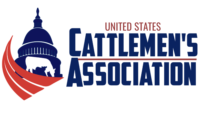Animal disease traceability picks up the pace

 States continue to develop and implement an efficient and cost-effective animal disease traceability (ADT) system. This is not an easy task, especially for the beef cattle industry, because of the distribution of cattle in a wide variety of herd sizes. But the cattle industry still will continue to embrace these changes, says Richard Rasby, professor of Animal Science at the University of Nebraska-Lincoln.
States continue to develop and implement an efficient and cost-effective animal disease traceability (ADT) system. This is not an easy task, especially for the beef cattle industry, because of the distribution of cattle in a wide variety of herd sizes. But the cattle industry still will continue to embrace these changes, says Richard Rasby, professor of Animal Science at the University of Nebraska-Lincoln.
"The industry works hard every day to assure the consumer that beef is a safe and nutritious food source," he says. "ADT is yet another way for the livestock industry to tell the consumer that they are taking all the steps to assure this. If there were a disease in the livestock industry that causes concern about the safety of food, ADT will aid in tracking and taking appropriate steps to assure the consumer."
The industry has shown progress in animal traceability this year. H. Russell Cross, professor and head of Texas A&M's Department of Animal Science, cites examples of improvements, including data from the National Beef Quality Audit (NBQA) and the Feeder Calf Beef Quality Assessment (FCBQA):
- In 2005, 3.5 percent of cattle had an RFID Electronic tag. In 2011, 20.1 percent of the cattle had an RFID Electronic tag. (NBQA 2011)
- In 2011, more than half of the cattle at the packing plant also had an individual visual tag. (NBQ 2011)
- At the packing plant, 100 percent of the cattle purchased are traceable to the feed yard. Therefore, the industry can account for, on average, the last 185 days of life of each fed steer and heifer. (FCBQA 2011)
- Each of the major fed beef packers have dedicated either an entire day or a shift each week to production for non-hormone treated, natural and/or age and source verified cattle, which shows that more is being produced.
- 43.7 percent of the feed yards surveyed indicated they had sold some cattle that were sourced and age-verified. (FCBQA 2011)
- At the retail level, more retailers are offering a line that has some traceback elements built into the brand. The data shows that systems are advancing to track cattle.
- RFID systems are available that will read tags more than 0.5 mile away.
- GPS systems are used on tractor trailers and for individual cattle.
In addition as of Jan. 1, the Texas Animal Health Commission (TAHC) implemented mandatory identification for sexually intact cattle that are 18 months of age and older that are sold. Cattle that move directly to slaughter do not fall under these regulations.
"The new TAHC regulations mentioned above are for animal health and not food safety," Cross says. "However, there was not very much negative publicity associated with these new regulations, and [it] may be a sign that producers are softening somewhat when it comes to animal ID and traceability."
"Relying on the states to do what the feds were unable or unwilling to do will only slow down the development of a true traceability program," he adds. "While more palatable by sneaking the requirements for compliance in through the states, the end result will be a very limited traceback capability."
Traceability challenges
In the beef industry, quick and complete implementation along with controls to keep costs low, are some of the greatest challenges to animal traceability, University of Nebraska's Rasby says. Implementation will be a work in progress considering the average herd size of cow-calf operations in the United States is about 40 head, Cross says.
Improvements in ID technology also need to be made.
"The RFID tags are a step in the right direction, but their limitation is that they cannot be 'read' at the speed of commerce in some segments of the beef industry," Cross explains. "Once better readers or active RFID tags become available, the possibility of implementing a national traceability/ID program involving all beef cattle becomes more feasible. In addition, assembly, management and the security of the massive animal ID database that will emerge has yet to be resolved."
Tracing fed cattle past the feed yard also has mixed results.
"Some feed yards purchase a significant percentage of their cattle directly from the ranch," Cross says. "For the majority of the remainder of the calves, it would be difficult to trace the cattle past the order buyer or action barn that they originated from immediately prior to traveling to the feed yard."
In addition, it is difficult to traceback cows and bulls past the auction barn or order buyer from which they were purchased prior to arriving at the packing plant, he says. Cattle numbers also have been and will continue to be low, thus making it difficult to differentiate what the meat processor can pay for age- and source-verified and non-age-verified and non-source-verified cattle.
Gaining beef producers' trust that traceability will be used strictly for the purpose of managing animal-health issues is also essential, Cross adds. It may take surviving a disaster that will ultimately show the industry it needs a viable traceback system, he warns, or may be exports or a domestic animal-health disaster that pushes the industry over the edge.
If consumer trends that have been taking place during the last 10 years continue, the speed of traceability from the ranch to the consumer must improve to meet these demands, Cross emphasizes. He believes systems will continue to evolve and more retailers will put in retail lines that offer age- and source-verified information.
"This will be done by offering branded beef, store brands or packer brand lines of cattle that are naturally raised from which traceback information will be essential," Cross says.
Rasby also expects that states will continue to focus on implementation. At the same time, he believes states will work with their neighbors to develop ADT compatibility. This should allow interstate movement of livestock to meet the goals and objectives of ADT, and permit livestock movement to be seamless without undue obstacles.
Looking for a reprint of this article?
From high-res PDFs to custom plaques, order your copy today!









